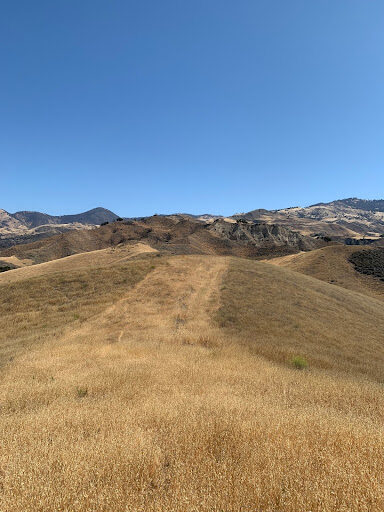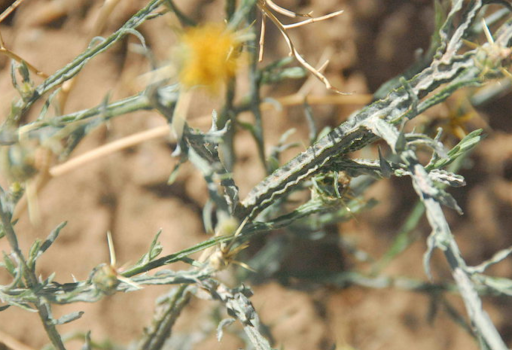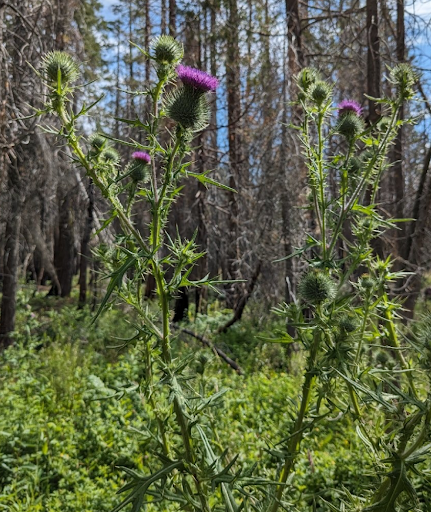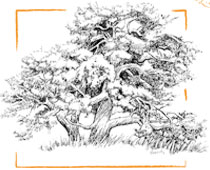By Kristen Zumdahl

Why We Launched This Project
As spring unfolded across Sedgwick Reserve, new plant growth returned to the landscape. During the Lake Fire, bulldozers created many miles of fuel breaks to contain the blaze. While these fuel breaks were critical to protecting the Reserve, they also disturbed the soil and vegetation, creating ideal conditions for invasive plant species to take hold and spread.
Invasive non-native plants pose a serious risk to native ecosystems. They often out-compete local species, disrupt natural ecological processes, and reduce biodiversity. Because of this, the La Kretz Center implemented a monitoring program to monitor these bulldozer lines during the peak growing season—from April through August.
Thank You to Our Incredible Docents
We want to extend our deepest thanks to the amazing team of docents who took part in this effort. They hiked through steep, rugged terrain, carried their gear, and spent long hours in the field identifying plant species—all in service of protecting Sedgwick Reserve’s natural ecosystems.
Their dedication and sharp observation skills were the backbone of this project. Thanks to them, the Reserve gathered critical data that will help guide invasive species management in the coming years.

Our Results: A Promising Start
We’re thrilled to report that, as of July 2025 no new invasive plant species were found along any of the bulldozer lines! This is an encouraging sign that the Reserve remains resilient in the wake of the Lake Fire, and it highlights the power of early, proactive monitoring.
Beyond invasive species detection, docent efforts brought unexpected and equally important benefits. Several instances of damaged infrastructure were identified and addressed—repairs that may have gone unnoticed without your presence on these remote areas. They also helped flag areas at risk of erosion, allowing us to contain potential problems before they grow.
And perhaps most exciting of all, this project allowed the team to explore and connect with new corners of Sedgwick—places rarely visited, full of quiet beauty and ecological importance.
Common Misidentifications: A Learning Opportunity
Throughout the surveys, several already-established non-invasive plants were frequently flagged as potential concerns. This offered a great opportunity to refine our collective plant ID skills:
Tocalote (Centaurea melitensis) vs. Yellow Star Thistle (Centaurea solstitialis)
Tocalote is widespread and already present on the Reserve, but it was often mistaken for Yellow Star Thistle, a high-priority invasive. While similar in appearance, these two species can be distinguished by key features such as flower shape and spine structure.
 Tocolote
Tocolote Tocolote
Tocolote Yellow Star Thistle
Yellow Star Thistle Yellow Star Thistle
Yellow Star Thistle
Bull Thistle (Cirsium vulgare) and Italian Thistle (Carduus pycnocephalus)
These species were commonly questioned in the field. While both are considered nuisance weeds in some areas, they are already well-documented on the Reserve and not new invaders.
 Bull Thistle
Bull Thistle Italian Thistle
Italian Thistle
Summary of methods
Our monitoring project followed a clear and effective process that we adopted from a mobile app used by the Santa Barbara Botanic Gardens and Conservation Biology Institute on trails and fuel breaks after the Thomas Fire.
Timing: Surveys were conducted during the active growing season, when invasive plants are most visible and identifiable.
Identification Tools: Docents used a field guide that Kristen Zumdahl and Frank Davis of the La Kretz Research Center created featuring 10 key invasive species to watch for. Each entry included identifying features, preferred habitat, and photographs for reference.
Survey Strategy: Docents were trained to assess the surrounding vegetation when unsure about a plant’s status. If the plant was found in nearby undisturbed areas, it was typically not newly invasive and not a concern for this monitoring effort.
Data Reporting: All observations—including sightings of invasive species, trail erosion, and general landscape changes—were reported using the Anecdata App. This citizen science platform allowed us to collect, organize, and analyze field data efficiently while keeping it accessible to researchers and fellow volunteers.
We will continue to monitor fuel breaks and roadsides widened during the Lake Fire for at least another growing season. Please feel free to contact La Kretz Center Director Frank Davis (frankdavis@ucsb.edu) if you have any questions or suggestions.
